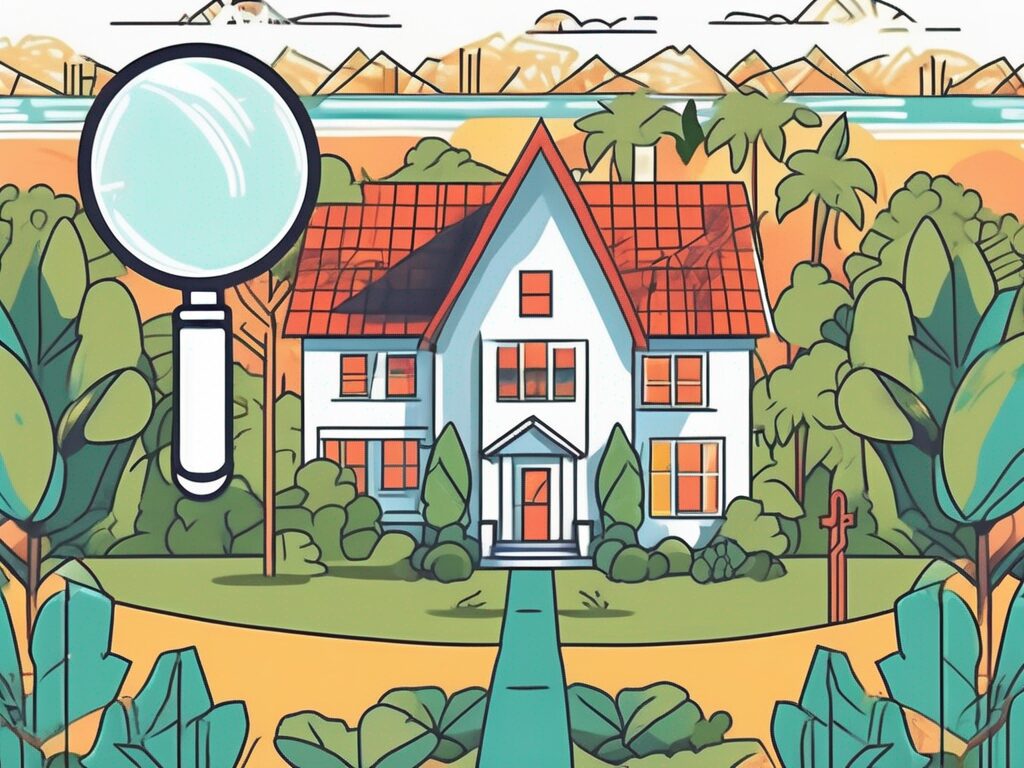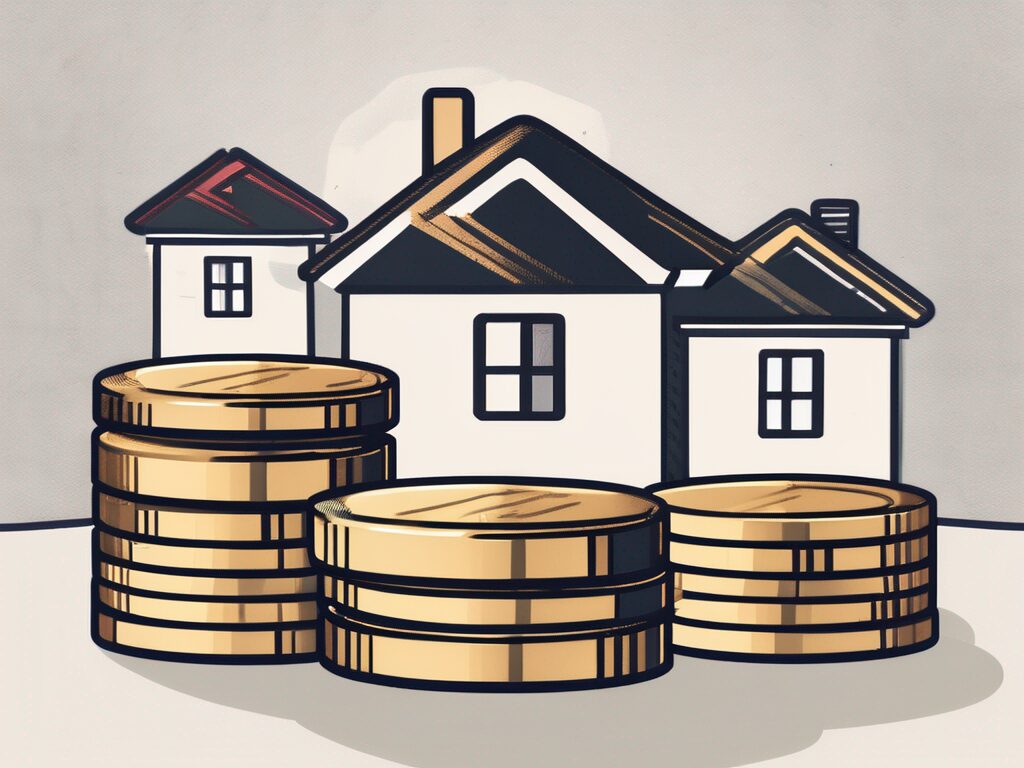
Agent A-Team or Solo Superhero? Finding the Right Real Estate Partner for Your Selling Journey in Wildwood Florida
When it comes to selling your home in Wildwood, Florida,…
January 29, 2024
In the world of mortgages, there are many options available to potential homebuyers. One such option is the 80-10-10 loan, which has gained popularity in recent years. If you are considering this type of mortgage, it is important to fully understand how it works and whether it is the right choice for you. In this comprehensive guide, we will break down the mechanics of an 80-10-10 loan, discuss its advantages and disadvantages, explore who qualifies for this type of mortgage, and compare it to traditional mortgage options. We will also delve into alternative financing solutions that you may want to consider. So, let’s dive in and demystify the world of 80-10-10 loans.
Before we dive into the specifics of the 80-10-10 loan, let’s first clarify what it is. In simple terms, an 80-10-10 loan is a type of piggyback mortgage that allows homebuyers to secure financing for their home purchase without having to pay private mortgage insurance (PMI) and without the need for a large down payment.
Now, let’s take a closer look at the mechanics of an 80-10-10 loan. The loan is split into three parts: an 80% first mortgage, a 10% second mortgage, and a 10% down payment from the buyer. This arrangement allows buyers to avoid paying PMI, which is typically required if the down payment is less than 20% of the purchase price.
Let’s illustrate this with an example. Say you are buying a home for $500,000. With a traditional mortgage, you would need to make a down payment of $100,000 (20% of the purchase price) to avoid PMI. However, with an 80-10-10 loan, you can put down only $50,000 (10%) and obtain an 80% first mortgage for $400,000 and a 10% second mortgage for $50,000. This can significantly reduce the amount of upfront cash you need to secure your dream home.
Now that we understand the mechanics of an 80-10-10 loan, let’s explore some of its advantages.
One of the primary advantages of an 80-10-10 loan is the ability to avoid PMI. PMI can add a significant amount to your monthly mortgage payment, sometimes as much as a couple of hundred dollars. By eliminating the need for PMI, you can potentially save thousands of dollars over the life of your loan.
Not having to pay PMI can free up funds for other expenses or allow you to pay off your mortgage faster. Imagine being able to redirect those monthly PMI payments towards other financial goals, such as saving for your child’s education or investing in your retirement.
Another advantage of an 80-10-10 loan is the flexibility it offers. It allows you to spread out your payments between two mortgages, which can result in more manageable monthly payments. This can be particularly beneficial if you are purchasing a more expensive home or if you have other financial obligations to consider.
Having the option to split your mortgage into two parts can provide you with greater control over your finances. You can choose to pay off the second mortgage more aggressively while making regular payments on the first mortgage. This strategy can help you build equity in your home faster and potentially save on interest payments over time.
Furthermore, an 80-10-10 loan can also be advantageous for borrowers who have a good credit score but may not have enough savings for a large down payment. This type of loan allows them to enter the housing market sooner and take advantage of favorable interest rates and home prices.
It’s important to note that an 80-10-10 loan may not be suitable for everyone. It’s essential to carefully consider your financial situation, long-term goals, and consult with a mortgage professional to determine if this type of loan is the right fit for you.
In conclusion, an 80-10-10 loan is a financing option that can help homebuyers avoid PMI and reduce the upfront cash required for a down payment. It offers flexibility and potential cost savings over the life of the loan. However, it’s crucial to thoroughly assess your financial circumstances and seek expert advice before making a decision.
While an 80-10-10 loan has its advantages, it may not be the right choice for everyone. Here are four reasons why you may want to consider this type of mortgage:
However, it’s important to note that there are also considerations to keep in mind when deciding if an 80-10-10 loan is right for you. Let’s take a closer look at the pros and cons.
Pros of an 80-10-10 Loan:
1. Lower upfront costs: One of the main advantages of an 80-10-10 loan is the ability to make a smaller down payment. This can be particularly beneficial if you don’t have a large amount of cash on hand for a down payment. By spreading the cost of the home purchase between two mortgages, you can reduce the initial cash outlay required.
2. Avoiding PMI: Private Mortgage Insurance (PMI) is typically required when a borrower makes a down payment of less than 20% of the home’s purchase price. However, with an 80-10-10 loan, you can avoid PMI altogether. By providing a down payment of at least 10% and splitting the loan into two parts, you can eliminate the need for PMI and save on monthly mortgage payments.
3. Flexibility: Another advantage of an 80-10-10 loan is the flexibility it offers in terms of payment structure. By having two separate mortgages, you have the option to choose different terms and interest rates for each loan. This can provide you with more financial flexibility and potentially reduce your monthly payment.
4. Interest savings: With an 80-10-10 loan, you may be able to secure a lower interest rate overall. By having a larger first mortgage with a lower interest rate and a smaller second mortgage with a potentially higher interest rate, you can achieve a blended interest rate that is lower than what you would have obtained with a single loan. This can result in long-term savings over the life of the mortgage.
Cons of an 80-10-10 Loan:
1. Complexity: One of the main drawbacks of an 80-10-10 loan is the added complexity compared to a traditional mortgage. Managing two separate mortgages can be more challenging and may require additional paperwork and coordination with lenders.
2. Higher interest rates: While an 80-10-10 loan can potentially result in interest savings, it’s important to note that the interest rate on the second mortgage is typically higher than that of the first mortgage. This means that you may end up paying more in interest over the life of the loan compared to a single mortgage with a lower interest rate.
3. Additional costs: Splitting the loan into two parts can also come with additional costs. You may incur extra fees, such as origination fees, for each mortgage. It’s important to carefully consider these costs and factor them into your overall financial planning.
4. Qualification requirements: Lastly, qualifying for an 80-10-10 loan may be more challenging than qualifying for a traditional mortgage. Lenders typically have stricter requirements for borrowers, including higher credit scores and lower debt-to-income ratios.
When deciding if an 80-10-10 loan is right for you, it’s important to weigh the pros and cons and consider your individual financial situation and goals. Consulting with a mortgage professional can help you determine if this type of loan aligns with your needs and preferences.
Before you commit to an 80-10-10 mortgage, it’s essential to carefully weigh the pros and cons. Let’s start with the advantages:
Now, let’s explore the potential downsides of an 80-10-10 mortgage:
As you can see, there are both advantages and disadvantages to consider when evaluating an 80-10-10 mortgage. It is crucial to carefully weigh these factors against your financial situation and long-term goals before making a decision. By thoroughly evaluating the pros and cons, you can determine if an 80-10-10 mortgage aligns with your financial needs and objectives.
Now that you have a good understanding of what an 80-10-10 mortgage entails, it’s time to consider whether you qualify for this type of loan. While qualification requirements can vary from lender to lender, there are a few key factors to keep in mind:
It’s always a good idea to speak with a mortgage lender or a mortgage broker to get a clear understanding of the qualification requirements specific to your situation.
Now that we have explored the ins and outs of an 80-10-10 loan, let’s compare it to traditional mortgage options. While the 80-10-10 loan can be an attractive option for some, it’s important to understand how it differs from a traditional mortgage.
The primary difference between an 80-10-10 loan and a traditional mortgage is the down payment requirements and the need for PMI. With a traditional mortgage, you typically need to make a down payment of at least 20% to avoid PMI. However, an 80-10-10 loan allows you to make a smaller down payment and avoid PMI altogether.
Additionally, with a traditional mortgage, you often have the option of financing the entire purchase price using only one loan. This means you don’t have the option to split the loan into two parts like you would with an 80-10-10 loan. However, keep in mind that this also means you will be required to pay PMI if your down payment is less than 20%.
Ultimately, the best option for you will depend on your financial situation, goals, and preferences. Consulting with a mortgage professional can help you determine which type of loan is the right fit for you.
While an 80-10-10 loan can be an attractive option for many homebuyers, it’s important to explore alternative financing solutions to ensure you are making the most informed decision. Here are a few alternatives worth considering:
Remember, every individual’s financial situation is unique, so it’s important to carefully consider your options and choose the solution that aligns with your goals and circumstances.
Understanding 80-10-10 loans is crucial if you are considering this alternative mortgage option. Knowing the mechanics of how these loans work, their advantages and disadvantages, the qualification requirements, and alternative financing solutions can help you make an informed decision. Ultimately, the choice between an 80-10-10 loan and a traditional mortgage will depend on your financial situation, preferences, and long-term goals. By thoroughly evaluating your options and consulting with professionals, you can confidently navigate the world of mortgage financing and choose the best path for homeownership.
If you’re ready to take the next step towards homeownership with an informed approach to financing, consider leveraging the tools and services offered by Richr. As a platform dedicated to empowering For Sale By Owner transactions, Richr can provide you with a free home valuation to ensure you’re making the best financial decisions. Don’t miss out on the opportunity to list your property effectively using consumer portals and MLS. Call Richr on 844-957-4247 today to receive your complimentary Comparative Market Analysis (CMA) and start your journey with confidence.

If you want the Richr team to help you save thousands on your home just book a call.
 Book a call
Book a call